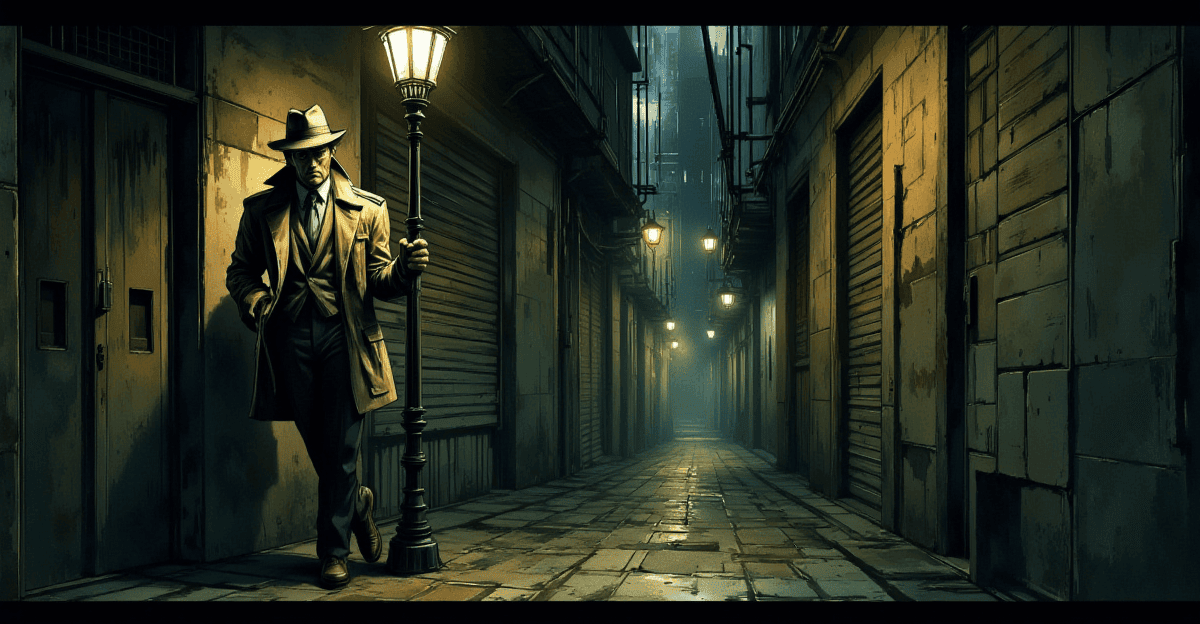
Back in 2015, if you’d said a self-published author could outsell big-name bestsellers, most people would’ve laughed you out of the room. Today? It’s not even surprising. The rise of independent creators in crime fiction, mystery, and thrillers has redefined what success looks like in a stubbornly traditional industry.
The publishing world is changing fast at this moment. The once mighty industry leaders are still trying to figure out how to take advantage of the constantly evolving technology that delivers their products. Meanwhile, independent creators are leveraging technology to create, promote and distribute their work.
Indie crime writers aren’t just surviving. They’re thriving. Creative freedom? Check. Global readership? Check. The ability to control their work while earning a living? Double check. Here’s how some of the smartest names in the game have made it happen—on their own terms.
Self-Published Stars That Blew Up the Charts
L.J. Ross
The story of L.J. Ross and her DCI Ryan Mysteries proves you don’t need a major publisher to dominate. Her 2015 debut Holy Island turned her into an indie juggernaut, selling over 7 million copies to date. Ross turned traditional publishing down, choosing to stay in control. Her books, set against vivid British landscapes, offer readers something a little different: atmosphere meets intrigue. By focusing on place and culture, she carved out her niche and built a rabid fanbase.
Robert Dugoni
When My Sister’s Grave dropped, Dugoni didn’t just grab readers’ attention—he shook up the industry. The blend of police procedural and courtroom drama created a bestseller that’s now been translated into over 20 languages. Starting out self-published, Dugoni now walks the line between indie and traditional, but his indie roots gave him the freedom to tell a story his way.
Rachel Amphlett
Rachel Amphlett’s Detective Kay Hunter series turned heads with its mix of gritty police work and psychological tension. Amphlett’s a masterclass in how to grow an audience—she built hers by using Facebook ads and newsletters like a scalpel, not a sledgehammer. It worked. Her breakout, Scared to Death (2016), put her on the map, and she hasn’t slowed down since.
Digital-First Writers Playing By New Rules
Indie creators know digital readers are hungry for quick hits of suspense. And nobody gets this better than writers like Blake Banner and Fiona Quinn.
Blake Banner churns out Dead Cold Mysteries faster than some readers can keep up. The tight pacing, lean storytelling, and rapid release schedules fit perfectly with platforms like Kindle Unlimited.
Meanwhile, Fiona Quinn blends romantic suspense with action-packed thrills in her Iniquus Security series. She’s proof that mixing genres doesn’t water things down—it widens the net. Quinn built her base through social media, engaging readers one by one. Her work delivers detail, research, and a dose of edge, giving fans something they didn’t know they needed.
Visual Creators and Storytelling Reinvented
Crime fiction isn’t just words on paper anymore. Creators like Justin Hall and Sophie Krause are bringing crime stories to life through comics, interactive games, and multimedia projects.
Justin Hall’s Crime City Comics is like stepping into a smoky noir movie—classic comic art meets crime storytelling that feels fresh, not recycled. He distributes his work on platforms like Gumroad and Patreon, proving that comic creators don’t need Marvel or DC to make an impact.
Sophie Krause’s The Brunswick Affair flips storytelling on its head by letting readers interact with the mystery itself. Her visual novels, hosted on platforms like Itch.io, blur the line between fiction and gaming. This isn’t just reading. It’s an experience—your choices drive the story forward.
The Audio Crime Wave
Podcasts are where storytelling and binge culture collide, and indie creators are cashing in.
Alex C. Gates built The Basement Tapes as a serialized audio mystery, mixing true crime vibes with fictional twists. What started as a podcast now lives on in self-published novels, giving fans even more ways to stay hooked.
And then there’s Morgan Greene, whose Jamie Johansson series brings Nordic noir to a global audience. By publishing through Kindle Unlimited and other platforms, Greene taps into the massive appetite for Scandinavian crime fiction without losing creative control.
What’s the Secret? (Hint: It’s Not Luck)
Here’s what these indie success stories teach us:
- Speed Wins. Indie authors release books faster—sometimes 2-3 a year—keeping readers hungry for more.
- Control Matters. Owning the rights to their work lets creators adapt—audio, comics, digital—you name it.
- Audience Is Everything. Social media, newsletters, and direct engagement turn casual readers into lifelong fans.
- Rules Don’t Apply. Mixing genres, blending mediums, or experimenting with interactivity? Indie writers do it first.
The old playbook is dead. You don’t need a gatekeeper’s permission to write—and sell—a great story. If you’ve got the talent, the drive, and a willingness to connect with readers directly, you can carve out your own success.
And as these creators prove, there’s nothing “indie” about going big.

